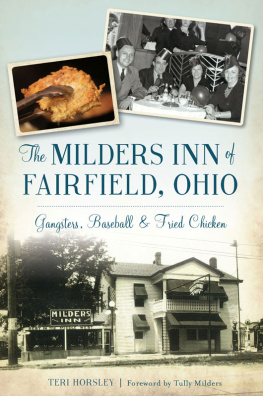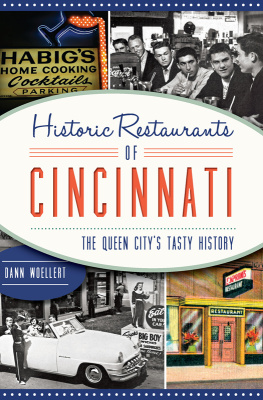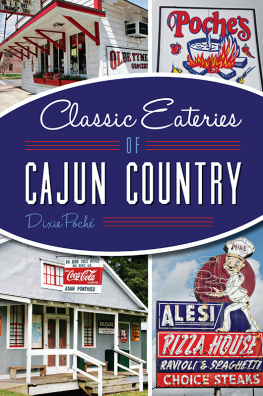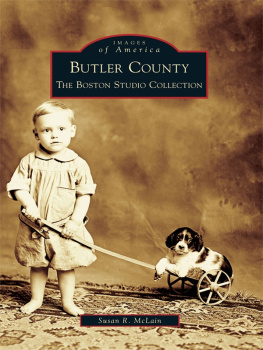

Published by American Palate
A Division of The History Press
Charleston, SC
www.historypress.com
Copyright 2019 by Teri Horsley
All rights reserved
Front cover: (clockwise from top left): Tim Wolf cooking meals at Andys Restaurant. Courtesy ofMary Jo Lambros Smallwood; Original site of Chesters Pizza. Courtesy of Nick Dadabo; Richards Pizzas Pizza Boy sending off a shipment of steak sandwiches. Courtesy of Karen UnderwoodKramer; Original site of Shady Nook. Courtesy of Teri Horsley; The Cone. Courtesy of Keith Wren.
First published 2019
E-book edition 2019
ISBN 978.1.43966.690.6
Library of Congress Control Number: 2019932638
print edition ISBN 978.1.46713.861.1
Notice: The information in this book is true and complete to the best of our knowledge. It is offered without guarantee on the part of the author or The History Press. The author and The History Press disclaim all liability in connection with the use of this book.
All rights reserved. No part of this book may be reproduced or transmitted in any form whatsoever without prior written permission from the publisher except in the case of brief quotations embodied in critical articles and reviews.
This book is dedicated to the family members of each of the iconic restaurants found within its covers. Without your willingness to share your personal histories, my idea would not have become a reality, and I am truly grateful for each of you and your willingness to participate.
CONTENTS
PREFACE
Growing up in Butler County, Ohio, offers one a traditional Midwestern existence: Friday night football, the annual county fair, small-town politics and many local restaurants that have been owned by the same family for generations. In my own hometown of Hamilton, the county seat and Butler Countys largest city, everyone knew the Milillos, the Isgros, the Nichtings and the Jolivettes (who owned Jollys). We supported these folks by offering our dining dollars in exchange for their great food, and we often offered our talents in exchange for a place on their staff. In my own experience, my first jobat fifteenfound me working for the Jolivettes as a carhop at their Brookwood Avenue location. Ill never forget the incredibly short uniforms, the giant mugs of root beer, my coworkers and my endless search for the perfect re-creation of their already-perfect footlong hot dog. We debated for hours about the correct blend of cheese and chili, but in the end, we typically went back to the way the recipe was originally created. I have great memories of those early days of my life, and I made great friends, many of whom I still enjoy today.
Likewise, I fondly remember my familys enjoyment of Milillos cheese pizza every Sunday night throughout the 1970s. The gooey cheese and homemade saucetopped off by my familys laughter as we caught up on our weekmade it a bit easier for this shy teenager to face going back to school on Monday. Later, as I moved toward adulthood, another of my favorite Milillos memories began, occurring each New Years Eve. Thats when my cousins and I would start the nights festivities around 5:00 p.m.,
picking up a sixteen-inch cheese and taking that delicious pizza to our grandparents house for one final meal before the end of the old year. While my grandparents are long gone, and my cousins have moved away, I cant help but feel close to all of them each time I bite into that delectable cheese and homemade Milillos sauce on top of that freshly baked crust.
Fine dining also played a prominent role in my community, and for my family, there were only a few ways to impress your friends or out-of-town guests when it came to fine dining in Hamilton in the 1970s, 80s and 90s. You took them to Isgros, Nichtings or Waldosit was as simple as that. When I think back on the many birthdays, anniversaries, wedding rehearsal dinners and other special events I enjoyed in these establishments, it saddens me greatly to think about the fact that they are no longer here.
By now, its probably obvious that my own memories of these and other Butler County, Ohio restaurants are what prompted me to write this book. What has been amazing is that, throughout the process, as I talked to the families who owned the restaurants and bounced ideas off of my own friends about which places to include, I came to understand the true meaning of the word iconic, and a book title was born. While Merriam-Webster defines iconic as something that is widely recognized and well-established, my friends and my memories have expanded that definition to include the Butler County, Ohio restaurants that are part of this book. While space does not allow me to include every regional restaurant that could be deemed iconic, it is my hope that everyone who reads the histories of these selected eateries will remember them with fondness and will take pride in the culinary history that defines our region.
ACKNOWLEDGEMENTS
Thanks to the following:
*The families of each restaurant that is included in this book. Without your help, it would not have been possible
*Lisa Rankey, of Lisa Rankey Photography, for her assistance in converting the photos to meet acceptable publication standards
*David Balsinger, of Balsinger Media, for his help in converting the photos to acceptable publication standards
*Photographer Todd Rice for his work in adding to the overall photographic collection presented here
*The many friends and schoolmates who connected me to the families who owned these iconic restaurants
*My mother, Margaret Hoel, for always being there when Im frustrated and ready to quit
*And most importantly, to my Lord, Jesus Christ, who is solely responsible for any success that I may have
PROLOGUE
On March 24, 1803, Butler County, Ohio, was formed from part of nearby Hamilton County, which today includes the city of Cincinnati. Named for General Richard Butler, an officer in the Continental army during the Revolutionary War, the countys land was first occupied by successive groups of Native Americans. By 1793, white settlers began moving into the area in large numbers after the signing of the Treaty of Greenville, creating a living boundary between the natives and white Europeans. In particular, its believed that the earliest white French explorers passed through the area near the Miami River in what is now Liberty Township/West Chester, giving way to an even greater influx of Europeans in the nineteenth and twentieth centuries. Between 1803 and 1823, in particular, the townships became officially recognized by the state of Ohio because of this growth, and large portions of the countys land were even first purchased by nonresident owners, including future president William Henry Harrison. However, as time went along, the immigrants who began buying or renting the countys property as an investment actually began settling here. Likewise, it was this immigration explosion of the late nineteenth and early twentieth centuries that brought what could be described as extreme growth to the countys previously established cities and townships, including Hamilton, Middletown, Oxford and Fairfield. This growth also brought about a desperate need for community services such as retail stores, grocery stores and small family-run restaurants.
Looking at each citys development, it is Hamilton, Butler Countys largest city (with an estimated population of 62,092 in 2016), that has the longest background; it was a military fort (established in 1791) before the creation of Butler County. By 1794, a town had grown up around the fort, and the city of Hamilton was born. First known as Fairfield, Hamilton grew quickly and reached a population of just over 1,400 by 1840. In the nineteenth century, Hamilton flourished as many new residents arrived from Ellis Island after emigrating from places like Germany, Ireland and Italy. In particular, the fourth ward of the citywith boundaries along what is now East Avenue, State Route 4, High Street and State Route 127became a culinary center of sorts, as it was home to many Italian immigrants who began working as bakers, grocers and restaurateurs to support their families while offering food service to the surrounding region.
Next page










